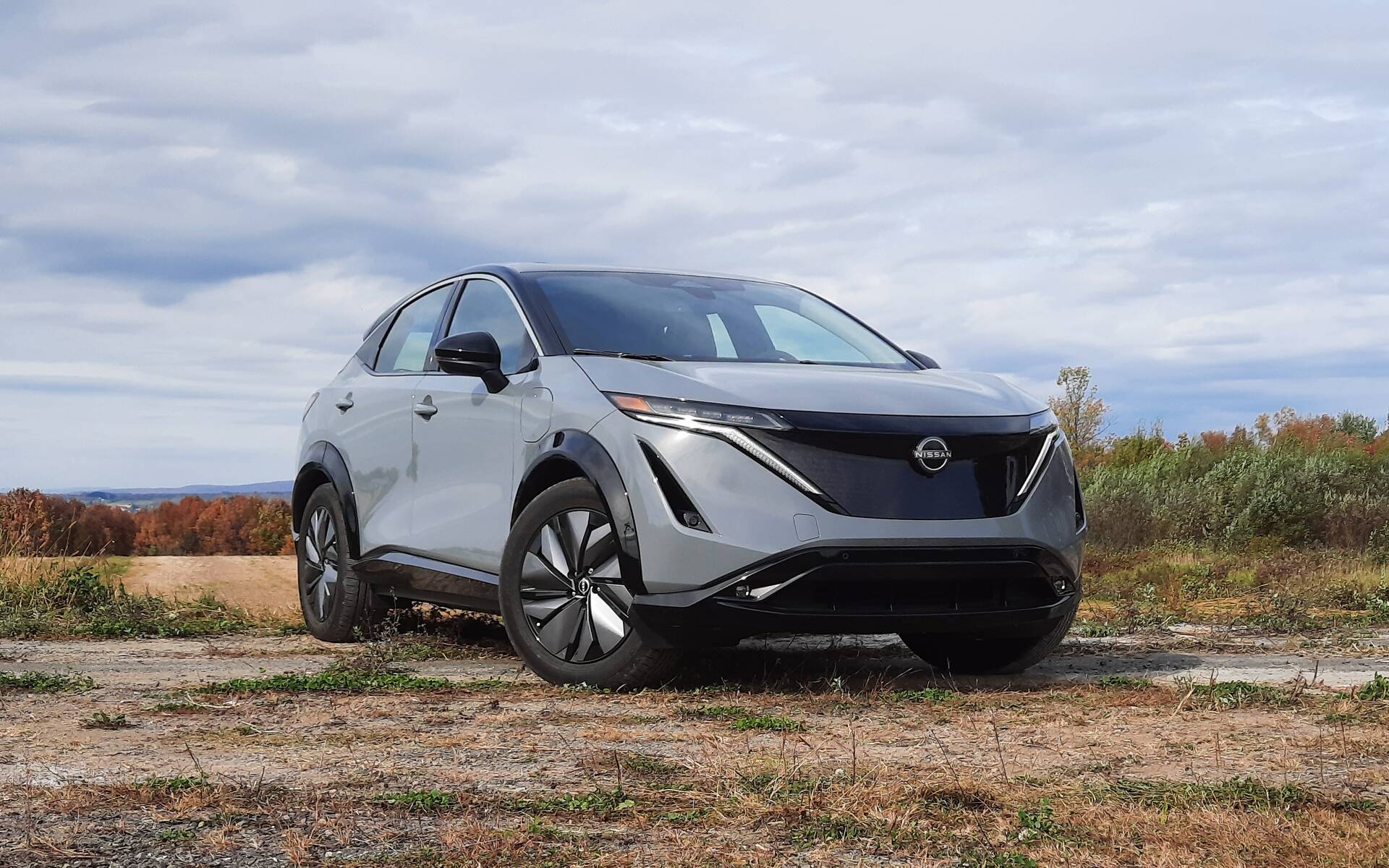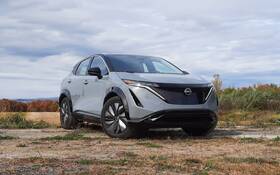2023 Nissan Ariya: The Best Electric SUV Japan Has to Offer

| Strong points |
|
|---|---|
| Weak points |
|
The market for electric SUVs is getting pretty interesting and Nissan has something to do with it, having launched the all-new Ariya as a much more spacious and competent, albeit more expensive alternative to the LEAF hatchback.
While sales of the LEAF are up 42 percent after three quarters in 2023, it’s only a matter of time before the Ariya takes the lead as Nissan’s best-selling EV and closes the gap that separates it from more popular rivals. But where does it rank among the best buys in the segment? Read on.
- Also: Nissan Jumps on Tesla’s NACS Bandwagon, Too
- Also: Nissan Takes Steps to Drive EV Shift in Canada
A Force of Wonder?
That’s how Nissan Canada describes the zero-emission Ariya. Despite the bean-shaped exterior, this SUV finds a couple of ways to shine on the outside. The front fascia is unique and incorporates powerful LED headlights in a thin layout, while the new interpretation of the brand’s V-motion grille, complete with an illuminated Nissan logo, fits perfectly in today’s EV landscape. The turbine-style wheels obviously serve an aerodynamic purpose, just like the detached spoiler adding a sporty touch at the top of the rear liftgate.

The contrasting black roof is a fashion item that we like, but designers have gone a bit over the top with gloss black trim on the lower body including around the wheel arches. That probably won’t stay clean and scratch-free very long. Another complaint we could make here is that the door openings aren’t that big.
Spacious and Modular
Inside, the Nissan Ariya offers a spacious, versatile and accommodating cabin. Legroom is quite generous, especially up front due to the missing centre tunnel, while the motorized centre console that slides fore and aft is a convenient feature (in the rearmost position, the middle rear seat becomes useless). It’s a shame the wireless charging pad is hidden beneath the armrest and there’s no other real spot to keep your phone—or maybe that was done on purpose to prevent driving distractions, who knows?

Nissan’s effort to create a distinctive and welcoming interior is commendable. Examples include ambient lighting, two-tone seating upholstery and fake but nicely finished wood trim on the dashboard and console. The seats are firm yet comfortable for long drives.
As for cargo, there’s an extra compartment next to the glove box, while the trunk offers a removable floor panel revealing a convenient area to store a charging cable and other items. At 646 litres, however, cargo volume fails to impress and is actually below average. And unlike a few competitors, the Ariya has no space under the hood for a frunk.

Comfort-Focused Driving
Sitting in the driver’s seat, we found that the steering wheel doesn’t offer the best possible grip with the hands positioned at 9 and 3 o’clock. In front of it is an attractive and configurable 12.3-inch digital instrument cluster with an available head-up display above. The similarly sized centre touchscreen is where you want it, and the infotainment system proves generally user-friendly, although we’ve seen sharper-looking interfaces in the segment. The stack of shortcut icons on the left side of the screen comes in handy.
For some reason, wireless Apple CarPlay is offered, but Android Auto still requires a cable, and the USB ports buried deep at the bottom of the centre console don’t help. Speaking of ergonomics, the touch-sensitive HVAC controls on the dashboard are cause for distraction while driving. Similar controls for drive mode selection and e-step function on the console are even harder to find without taking your eyes off the road.

The Ariya’s regenerative braking system is effective yet not so smooth at times, and true one-pedal driving is not possible. For sure, a highlight of the Ariya is how the suspension beautifully masks road imperfections. On the flip side, it’s excessively soft and produces annoying weight transfers, whether in S-turns, hard takeoffs and braking manoeuvres or even just coming to a complete stop. Steering, meanwhile, is light and effortless, which comes at the expense of feedback.
Visibility is not really a problem. Sure, it’s limited in the rear, but we’ve seen worse. Nissan’s 360-degree camera system is always there to back you up. Well, unless you select one of the two entry-level models. The digital rear-view mirror, also handy, is exclusive to the two most expensive models.
Multiple Configurations
The Nissan Ariya offers a choice of two batteries and two drivetrain configurations in order to satisfy all kinds of drivers. The base Engage (66 kWh) with FWD generates a mere 214 horsepower and range is limited to 348 km, which probably won’t appeal to a lot of people. The Venture+ and Evolve+ (91 kWh), also with FWD, increase output to 238 horsepower, but more importantly, range is boosted to 490 km and 465 km, respectively.

We put an Ariya Evolve+ to the test in fair weather conditions and realized that those range estimates are slightly optimistic. You also can’t trust the range indicator too much. Ours posted an average energy consumption of 17.1 kWh/100 km, but it was more like 19.6 kWh/100 km based on separate calculations. Maximum DC fast charging capacity is said to be 130 kW, except that we could not extract more than 92 kW at a 150kW Electrify Canada charger even with battery preconditioning. Filling up the battery from 26-80 percent took 32 minutes.
If you want an AWD-equipped Ariya, the Evolve e-4ORCE delivers 335 horsepower, which is way more competitive, but slashes range to just 330 km. As for the top-line Platinum+ and Premiere models, their 389 electric horses can gallop up to 428 km, Nissan says, making them the best combination of performance and range.

Should You Buy a Nissan Ariya?
The 2023 Nissan Ariya costs more money than a number of rivals with similar specs and content. Pricing starts at $55,834 including freight, PDI and other fees, then climbs to more than $62,000 and ends up just shy of $73,000. Yes, we’re talking about Nissan compact SUV. By the way, all Ariya models qualify for the federal government’s $5,000 EV incentive. Provincial rebates also apply.
In our opinion, the Ariya is the best electric SUV you can buy from a mainstream Japanese automaker, better than the Toyota bZ4X, Subaru Solterra and Mazda MX-30 (we’ll see about the upcoming 2024 Honda Prologue). It can’t match the Volkswagen ID.4 for value, let alone the Hyundai IONIQ 5 and Kia EV6. What about the Ford Mustang Mach-E and Tesla Model Y? It depends on what you’re looking for. These two don’t quite target the same customers.











